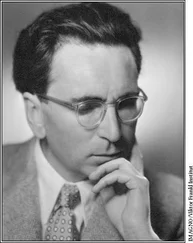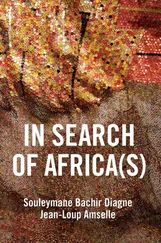On November 10, 1919, the New York Times ran the following front-page headlines:
LIGHTS ALL ASKEW IN THE HEAVENS
Men of Science More or Less Agog Over Results of Eclipse Observations
EINSTEIN THEORY TRIUMPHS
Stars Not Where They Seemed or Were Calculated to Be, but Nobody Need Worry
A BOOK FOR 12 WISE MEN
No More in All the World Could Comprehend It, Said Einstein When His Daring Publishers Accepted It
Albert Einstein was forty years old, and this was the first time his name had ever appeared in the New York Times. His first article on special relativity, “On the Electrodynamics of Moving Bodies,” which included the famous equation E=mc 2 , had been published fourteen years earlier, in 1905, and four years had passed since his last revision to the general relativity theory. Nevertheless, this was the moment when the public first became aware of Einstein and his significance. Einstein would become something of an oracle, the symbol of a new age, and almost every word he uttered would hereafter be recorded and reprinted by newspapers all over the world. The Treaty of Versailles had been signed only a few months earlier, putting an end to the Great War, and the world was now a different place. People everywhere seemed to sense that humanity was at the dawn of a new era, and Einstein was its prophet, a man whose advice and wisdom should be heeded. In a letter sent to his friend Max Born (one of the first interpreters of the relativity theory), Einstein actually lamented his newfound circumstance, with the modest self-confidence that he was famous for: “Just like the fairy-tale hero who transforms everything he touches into gold, everything I touch turns into scandal for the newspapers.”
From 1916 to 1917, Einstein had been developing a proof that could establish the validity of the general relativity theory. Unfortunately, there were few methods that could conclusively prove his assumptions were accurate. One of them was to gauge the curvature of light as it moved closer to a sufficiently large object, but this could only be done during a solar eclipse. Unfortunately for Einstein, Europe was mired in war at the time, and communications between German scientists and the outside world had come to an abrupt halt. As such, few physicists even knew of Einstein’s project, and he was forced to wait for the war to end before he could find someone who would be able to confirm his findings.
Long before the Great War started, Einstein had struck up a correspondence with Sir Arthur Eddington, and once Einstein was able to resume contact after the war ended, the illustrious English physicist immediately jumped at the chance to test the relativity theory in an experimental setting. They quickly set the date: May 29, 1919, just a few months after the armistice was signed. On this day, they would be able to observe a spectacular solar eclipse from any point close to the equator. In early 1919, Eddington secured the necessary financing—one thousand pounds—from the Astronomer Royal, Sir Frank Dyson, which enabled him to prepare two expeditions to the equator. One, which he led, would go to the island of Principe, off the west coast of Africa, and the other group would set off for Sobral, in the north of Brazil. According to Eddington’s calculations, both were ideal points from which to measure the shift that would occur when rays of starlight approached the sun. This, following Einstein’s calculations, would be 1.745 seconds of arc—double the estimate produced by traditional physics. With Dyson’s support, Eddington left for Príncipe in March.
On May 29, the day of the eclipse, Eddington arose at dawn and discovered, to his dismay, that a stubborn layer of clouds was now perched directly over the island and seemed determined to ruin his plans. After all his preparations and hard work, Nature herself seemed poised to betray her students. There was the hope, however, that the team in Sobral would be able to obtain results, but even that wasn’t enough to lift the astronomer’s spirits. Eddington cared not for the glory that the experiment could bring him, but the pride of being the first to prove this radical, new notion of what the world was. It was as if fate had played a cruel practical joke at his expense: After a few minutes, the clouds gave way to one of the most violent thunderstorms Eddington had ever seen in his entire life. The thunder reverberated in his ears like dry claps of artillery fire. If things kept going like this, the only curvature they would measure would be that of the stooped-over palm trees fighting the hurricane winds. The telescopes, the cameras, and all the other measuring instruments remained where they were, exposed to the elements, useless and defenseless against the explosions that rained down from the heavens.
By 1:30 in the afternoon, Eddington, despondent, was about ready to surrender. That was when the miracle occurred: Suddenly the clouds began to disperse, aided by a cool breeze. With only eight minutes to go before the eclipse, Eddington quickly rallied his group, all of them inspired by the sensation that they had been granted the great privilege of observing the history of the universe compressed into a few brief seconds. The sun appeared, radiant and soaring, only to be devoured moments later by the shadows of its rival, the moon. Amid this inconceivable noontime darkness, the dumbstruck birds quickly flew back into their nests while the monkeys and lizards settled in for an early night’s sleep. The momentary twilight seemed enveloped in a magical, white silence. In perfect harmony, the cameras captured the moment.
During the three days that followed, Eddington locked himself away in an improvised darkroom to develop the sixteen photograms that he had taken in order to carry out the necessary calculations. The instant Eddington spied the first images taking shape from beneath the photographic solution, like lost spectra floating in the water, he knew that success was his. After double-checking the calculations several times, Eddington emerged from his inner sanctum with the pride of a bishop prepared to crown anew king. The result was conclusive, despite the tiniest margin of error: Einstein had been triumphant! It took a few weeks for the news to travel the globe, and it wasn’t until November 10, 1919, almost six months after the experiment, after new measurements were taken, that it appeared in the New York Times.
At 7:30 that very same morning, in a small hospital in Newark, New Jersey, not far from Princeton, a baby was born. This child, in a way the first inhabitant of a new universe, would be baptized Francis Percy Bacon, son of Charles Drexter Bacon, owner of the Albany Department Store chain, and his wife, Rachel Richards, the daughter of banker Raymond Richards, of New Canaan, Connecticut.
One June afternoon several years later, Bacon’s mother decided to teach her son how to count. She placed him in her lap and in the same indifferent voice she used for reading him bedtime stories about angels and monsters, she revealed to him the secrets of mathematics, whispering each numeral as if it were a station of the cross or a psalm inserted into her prayers. Just outside the window, a tree struggled against the first summer thundershower, and the violent gusts of wind and rain reminded them of God’s presence and mercy. That day, Frank found a solution to the tempests and discovered, moreover, that numbers are sometimes better companions than people. Unlike human beings—he was thinking of his father’s sudden fits of temper and his mother’s cool, distant reserve—you could always rely on numbers. They are constant, he thought, and they didn’t suffer from mood swings. They didn’t ever cheat or betray, and they didn’t pick on little boys for being scrawny and weak.
Читать дальше












